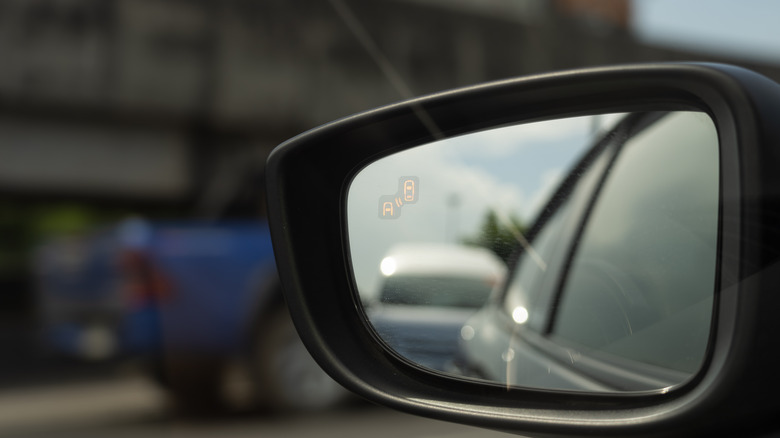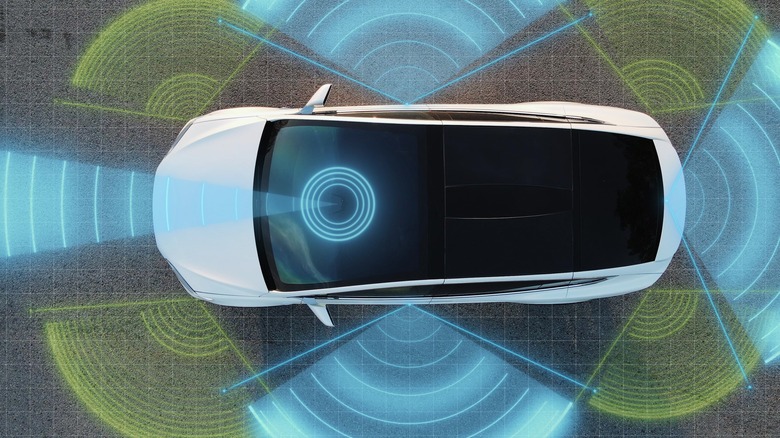The Unexpected Cost Of Advanced Car Safety Systems
Automotive advancements have made the roadways a safer place for drivers. The addition of forward airbags alone saved over 50,000 lives between 1987 (when they were first installed as a fully-functional system in American cars) to 2017. And the National Highway Traffic Safety Administration found in a study that seatbelts had saved the lives of almost 330,000 riders between 1960 and 2012.
Recent developments in the world of self-driving cars and autonomous roadway maneuverability have brought unique safety features into the hands of consumers. Whether your vehicle can perform its function without you or not, one addition that has become a standard across vehicle brands is the use of detection and crash avoidance installations.
These features have saturated the auto market, from backup cameras (and the sonar-like chime that accompanies movement in the reverse gear) to the simple blinking lights on your mirrors. Drivers can rely on this added layer of security when checking a blind spot before a lane change or while backing into a parallel parking space. The intuitive addition makes driving safer because it alerts drivers to hazards easily hidden by the vehicle's frame or a driver's limited mobility. However, crash avoidance features are at the center of new costs for car owners in a way that might not be immediately obvious.
Recalibration is essential after related repairs
In 2023, the Insurance Institute for Highway Safety reported that drivers whose cars include these features often require a much steeper repair bill when servicing their vehicle. This is particularly prevalent when repairing damage after a crash and, perhaps surprisingly, after a windshield repair or replacement. About 40% of drivers surveyed who experienced this problem also owned vehicles that were a 2019 model year or newer.
This means drivers with newer cars — often people who don't expect costly repairs in the first years of ownership — aren't immune to this issue. The trouble stems from replacing expensive motion detector sensors. When replacing them, recalibration is needed to ensure they are working correctly. However, a technician may not initially take this additional step, leading to an illuminated warning light that brings the vehicle straight back into the shop.
This is also a problem for drivers who have taken their car in to deal with a recall issue, piling on an already potentially troublesome situation. The required calibration can add a noticeable amount to the final bill for repairs. IIHS estimates that while a typical windshield replacement may only cost a driver $250, glass replacement and the necessary forward-facing sensor treatment can raise this price to well over $1,000. Still, it's likely worth it to many if the outcome is a drastic reduction in major collisions and minor scrapes that can affect your life or insurance costs.

